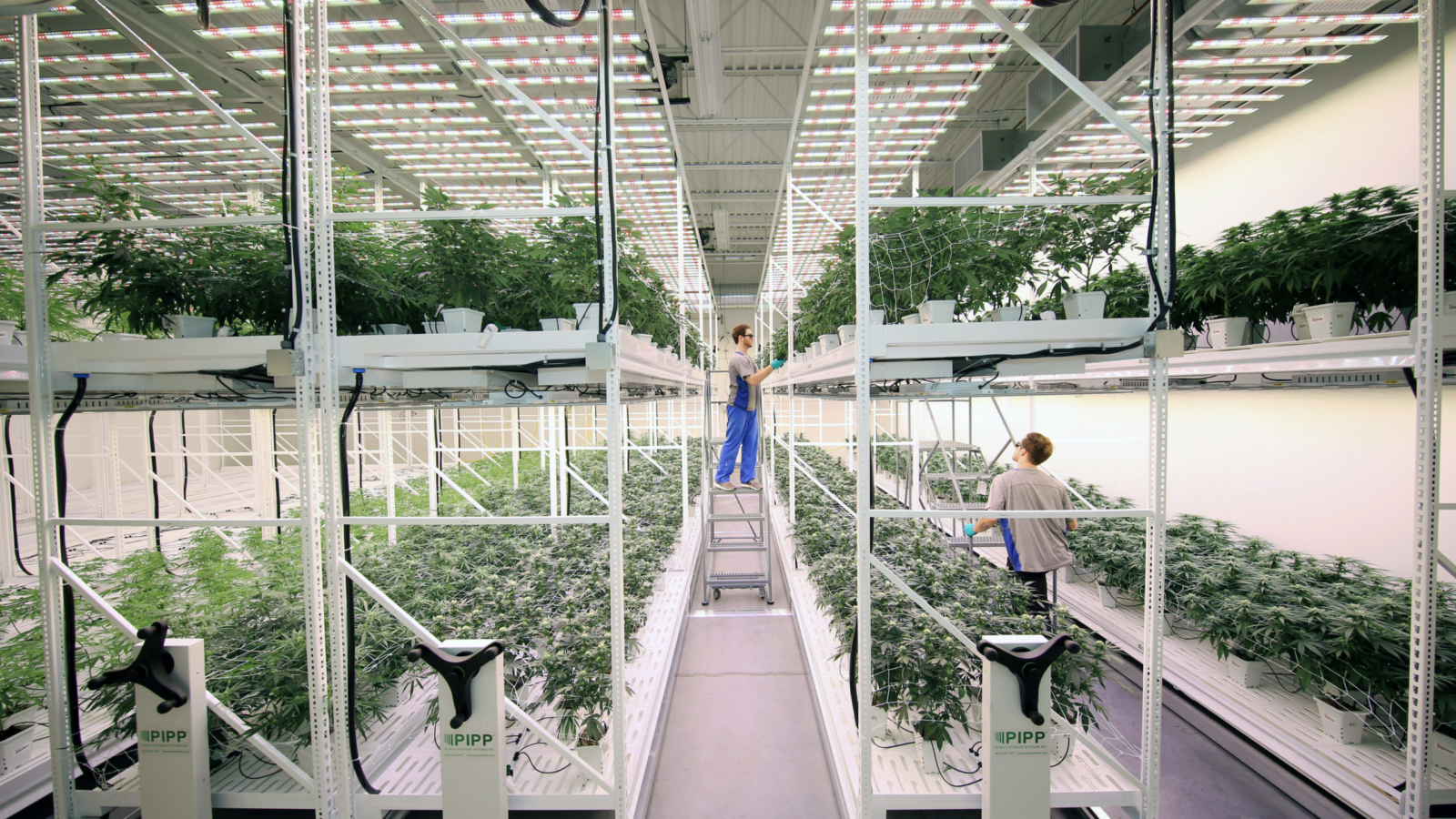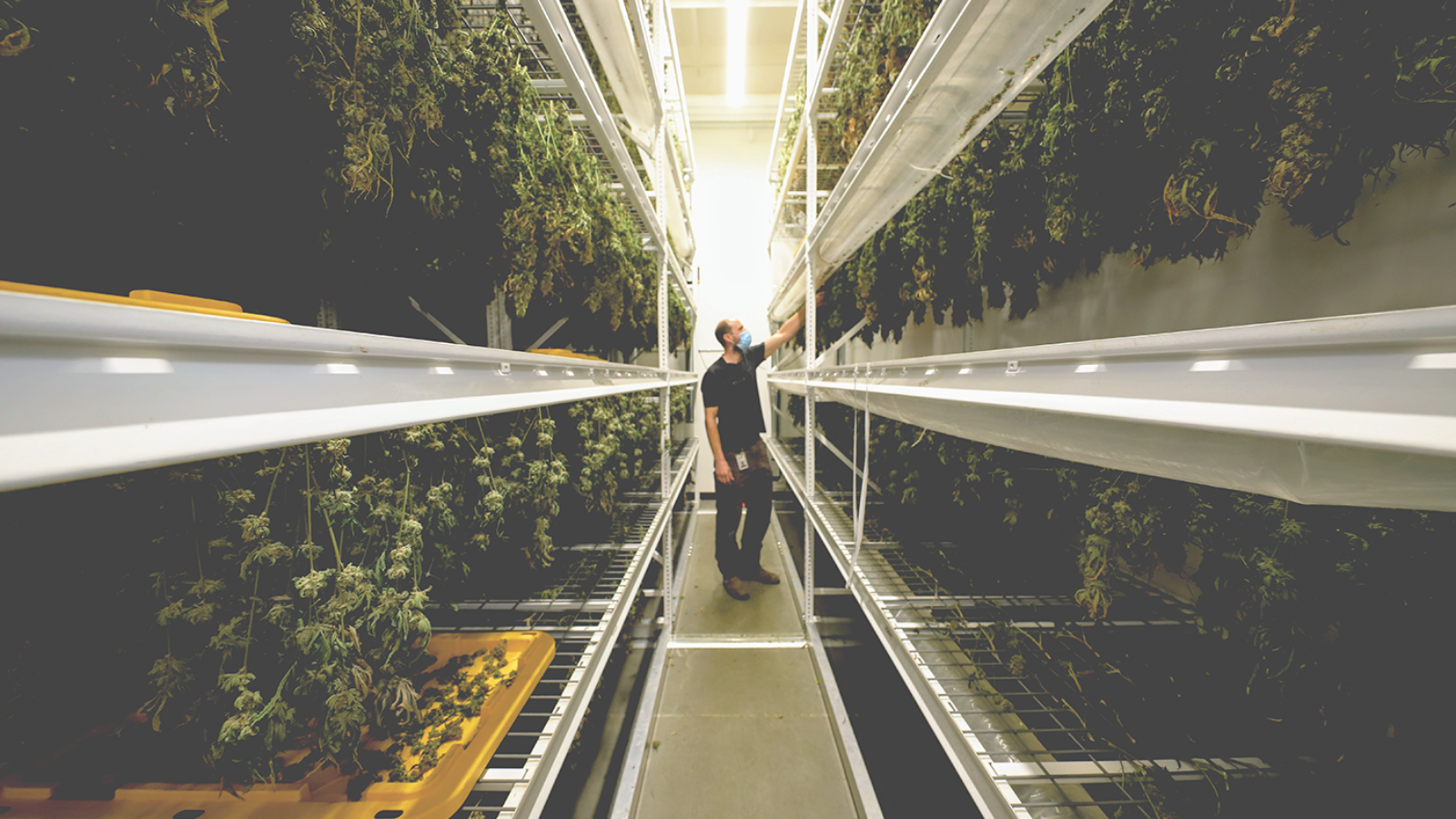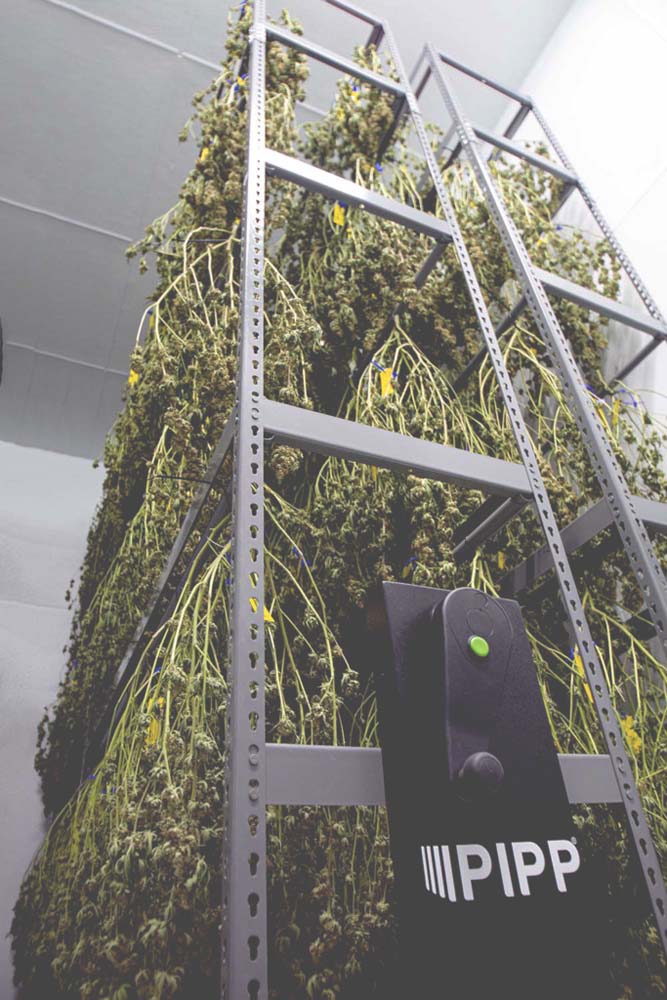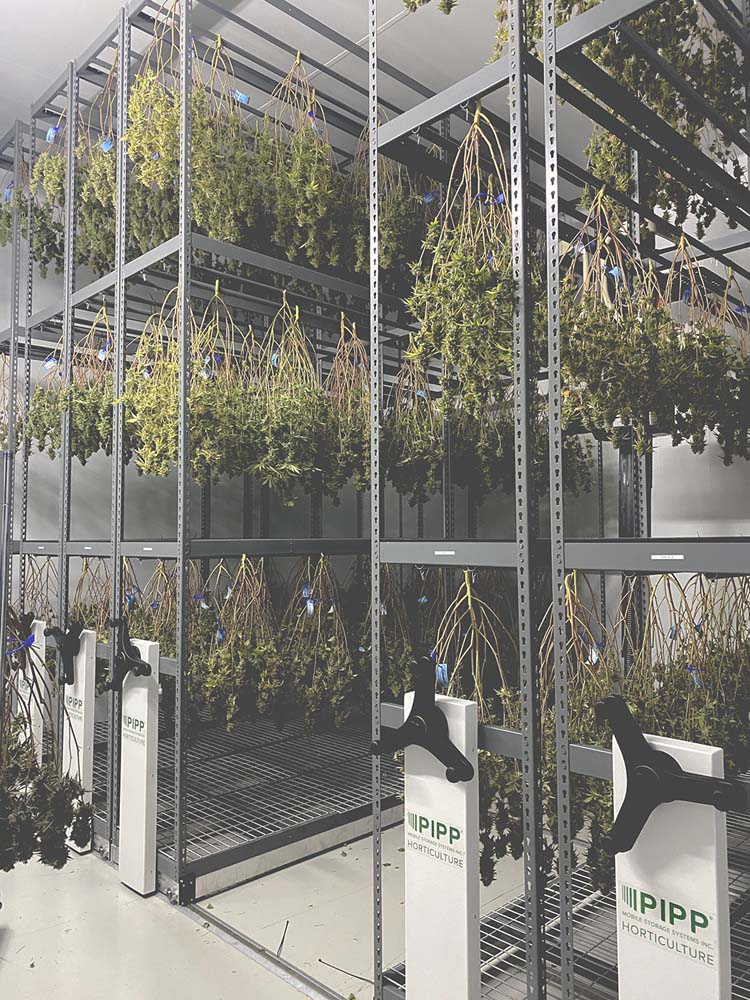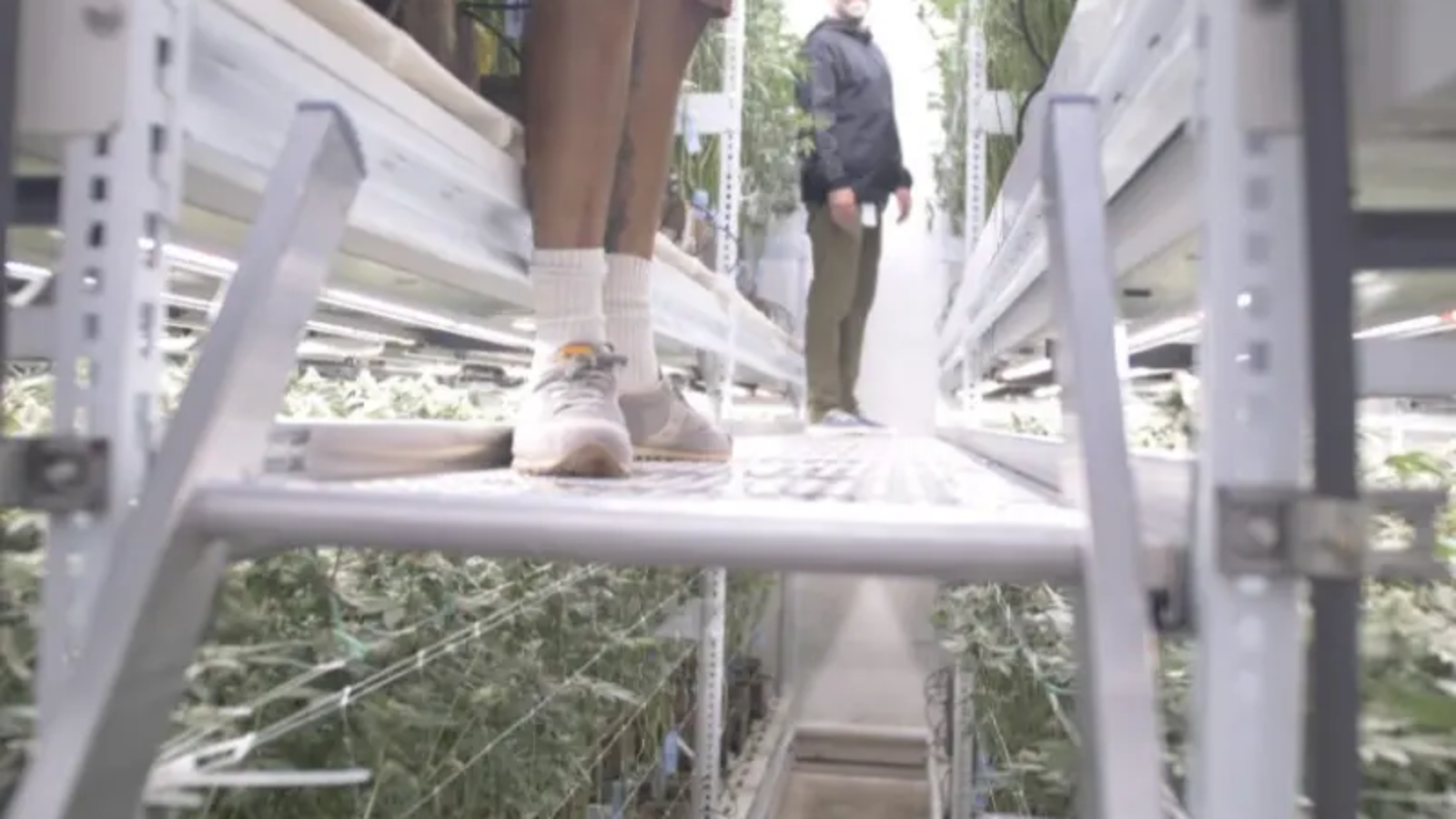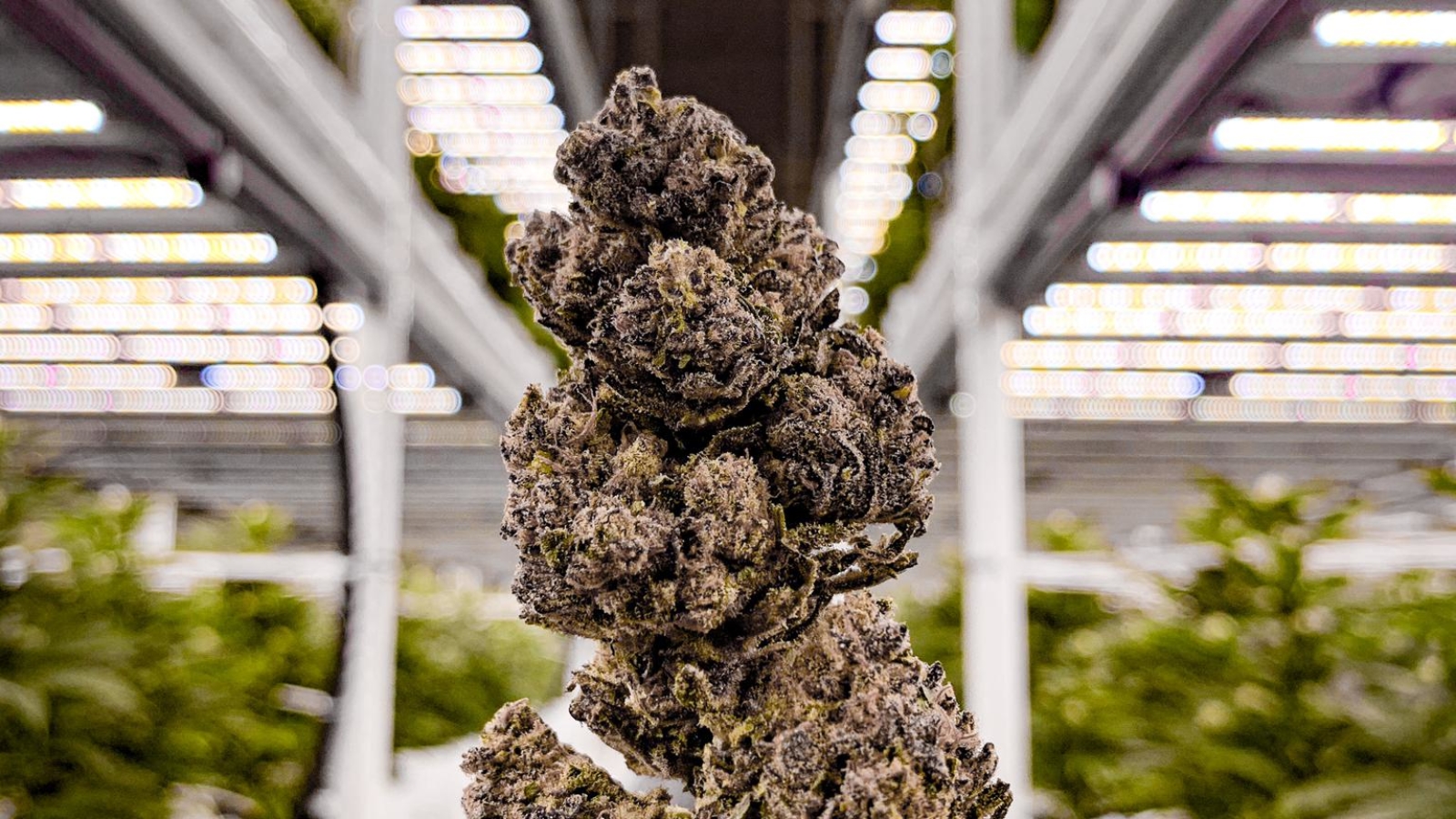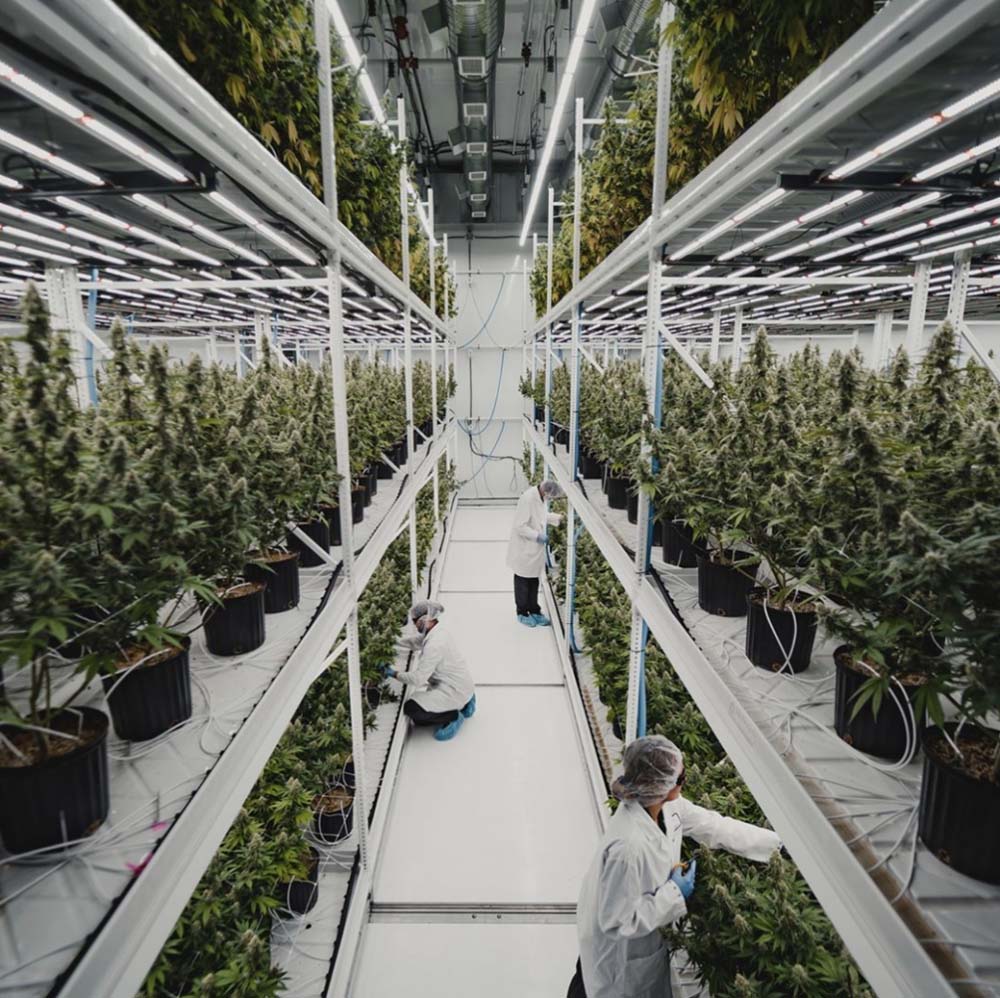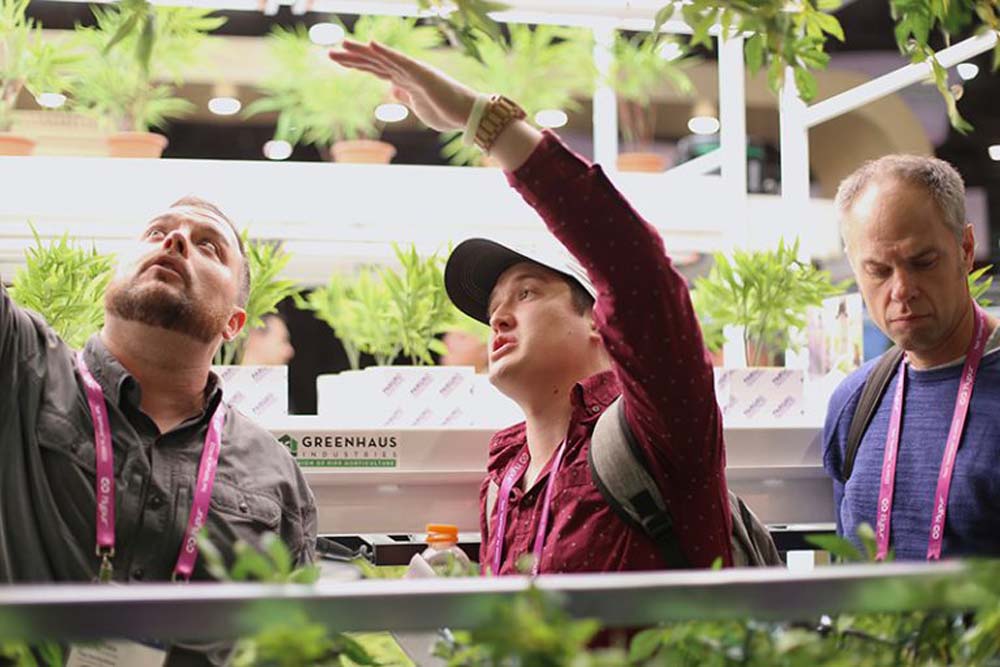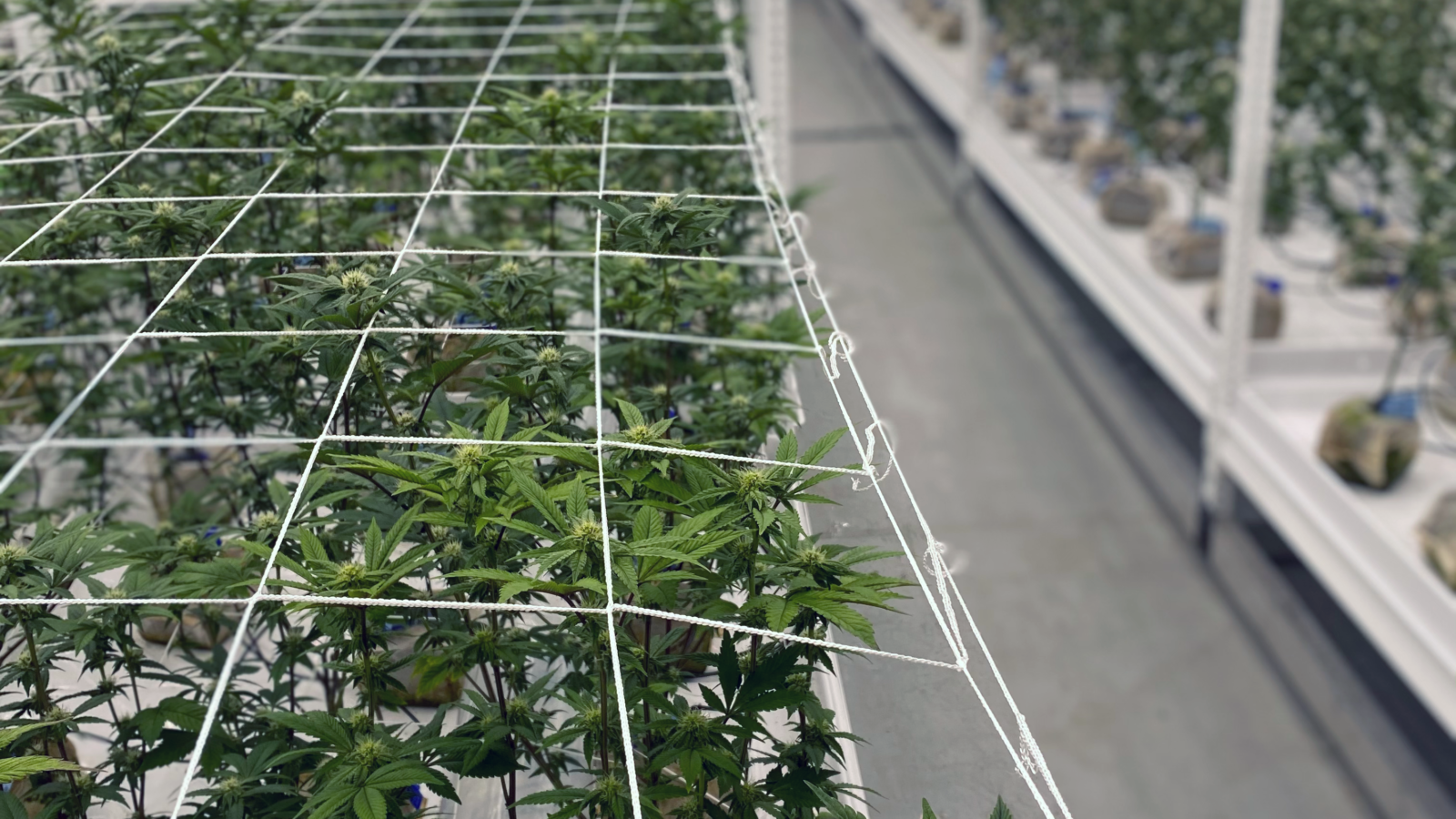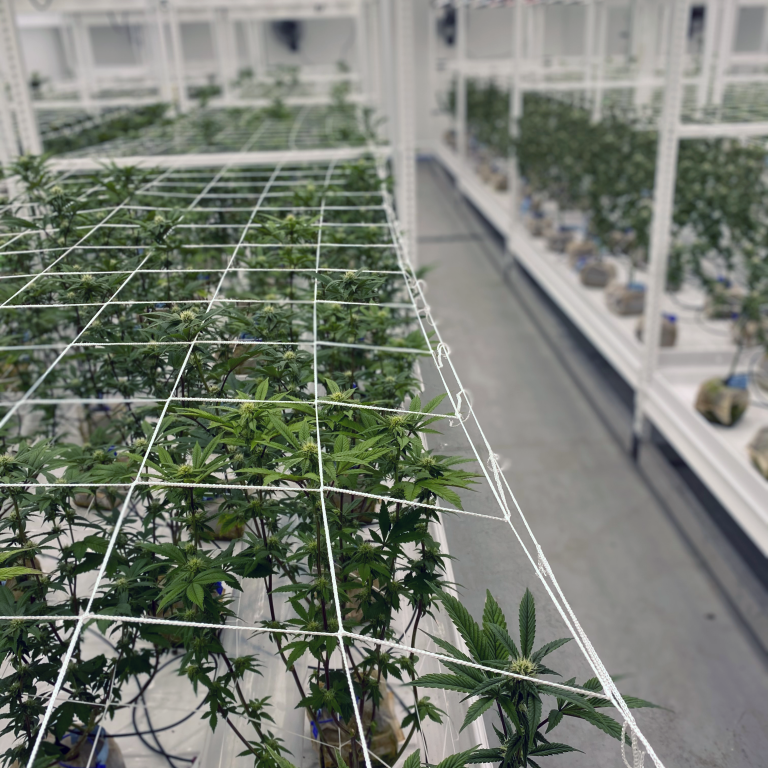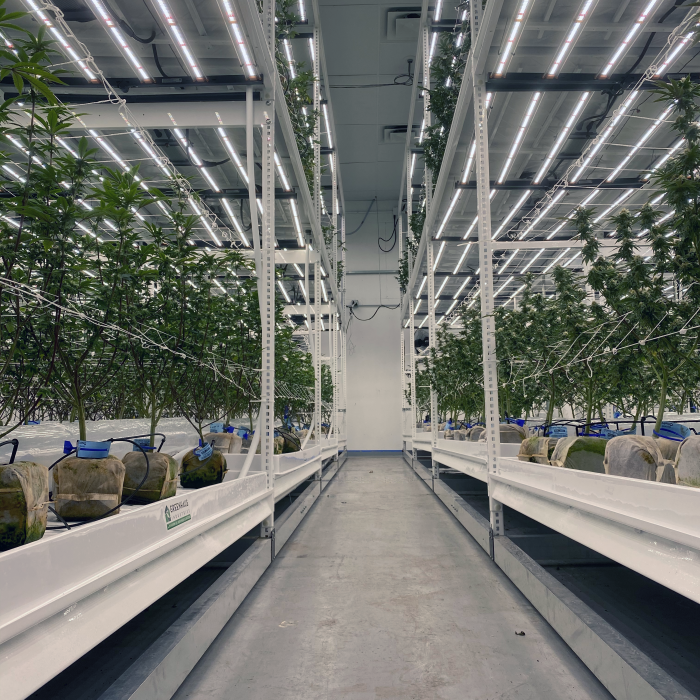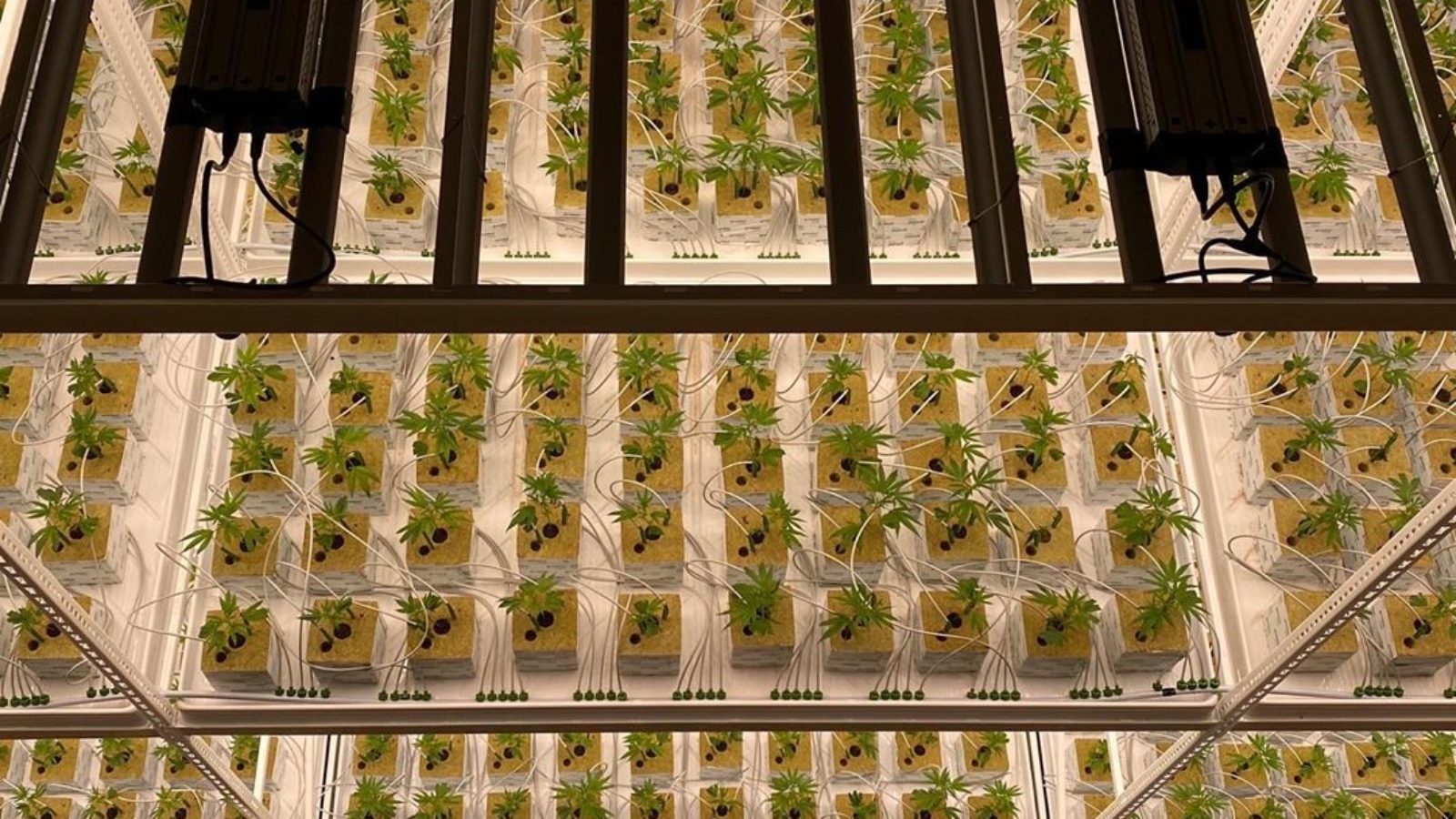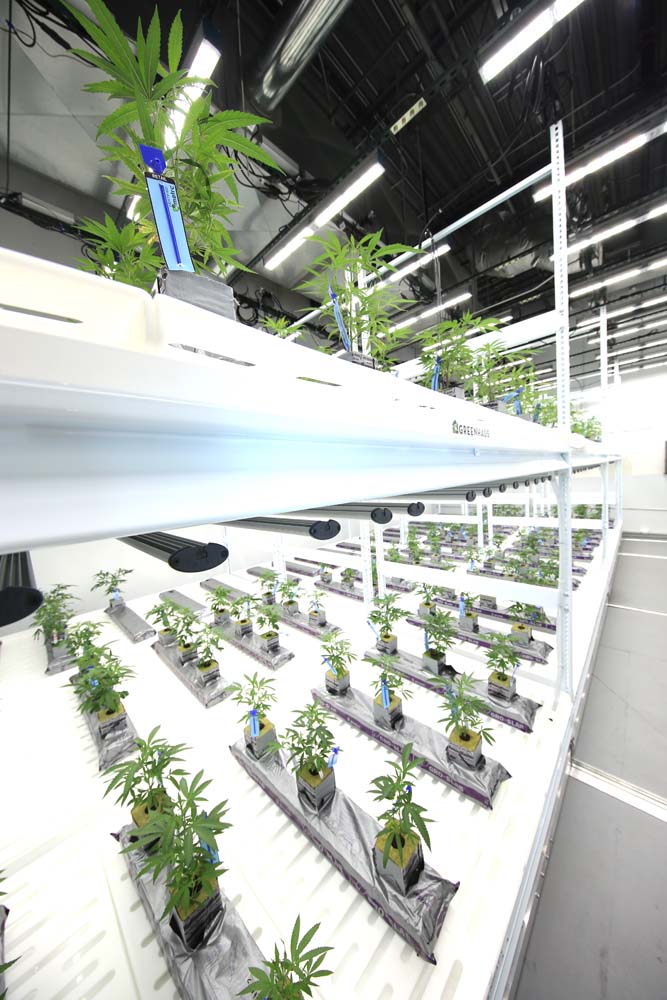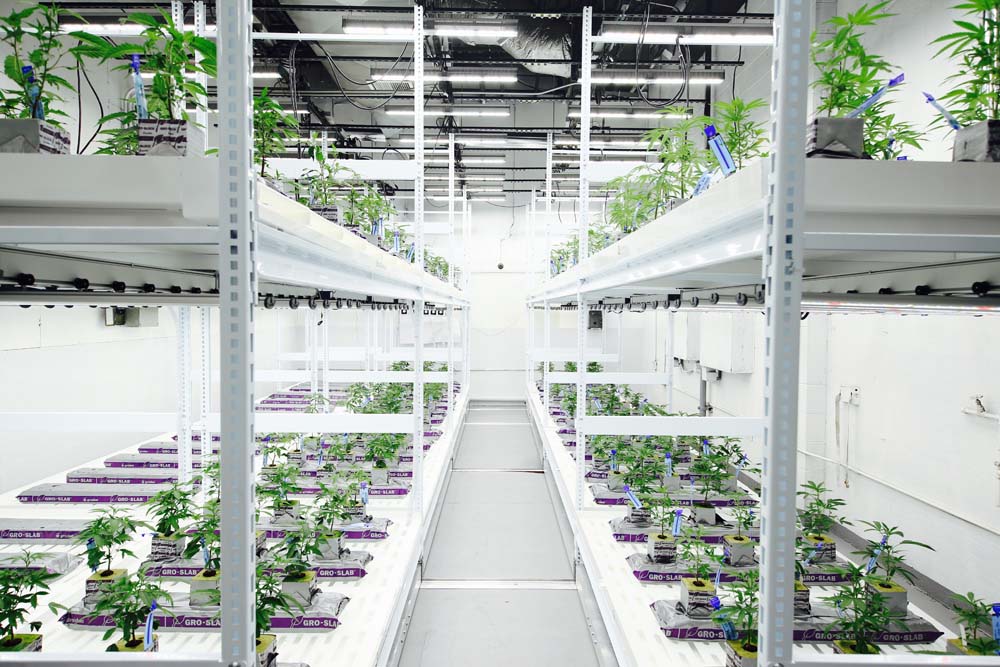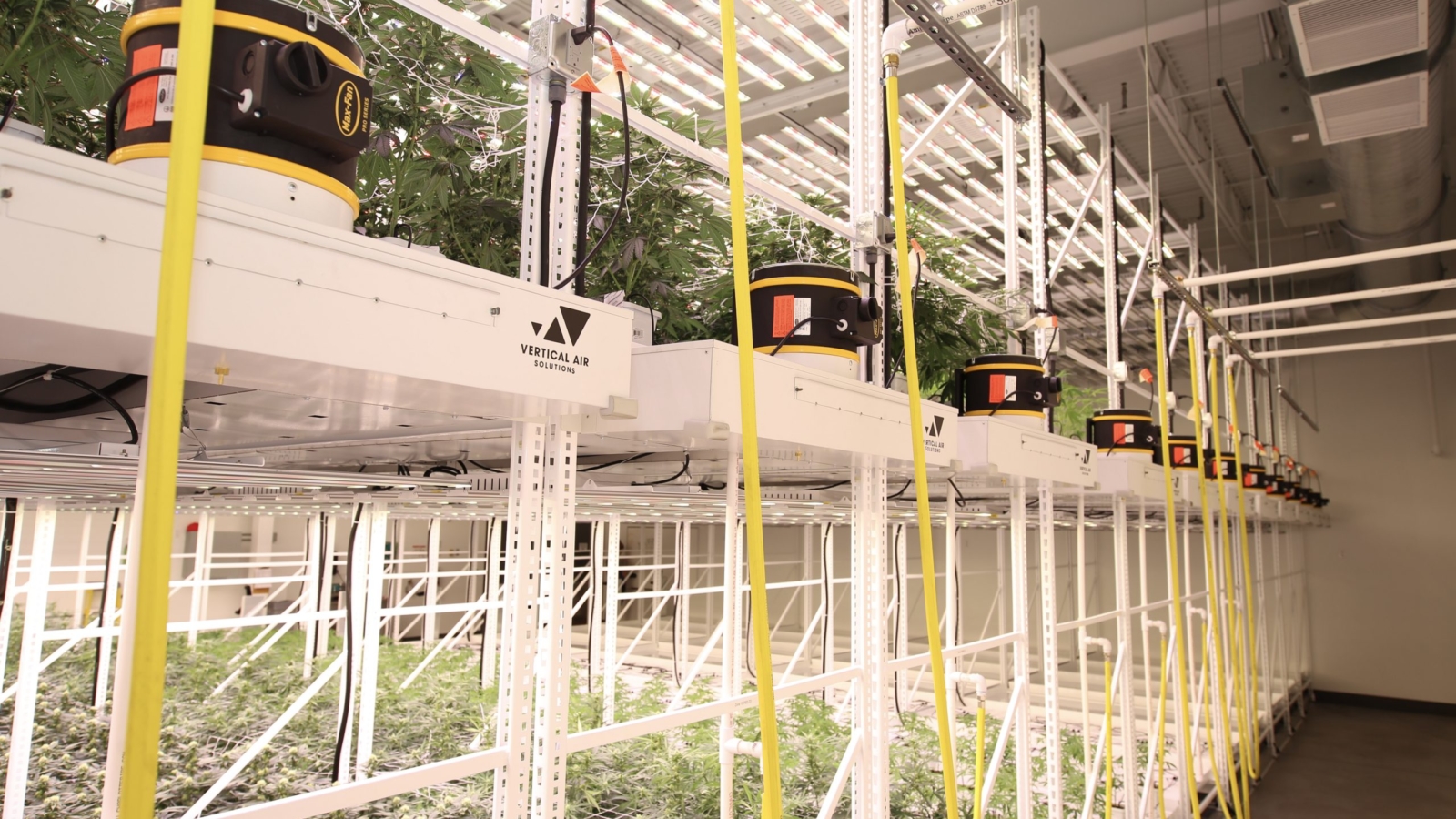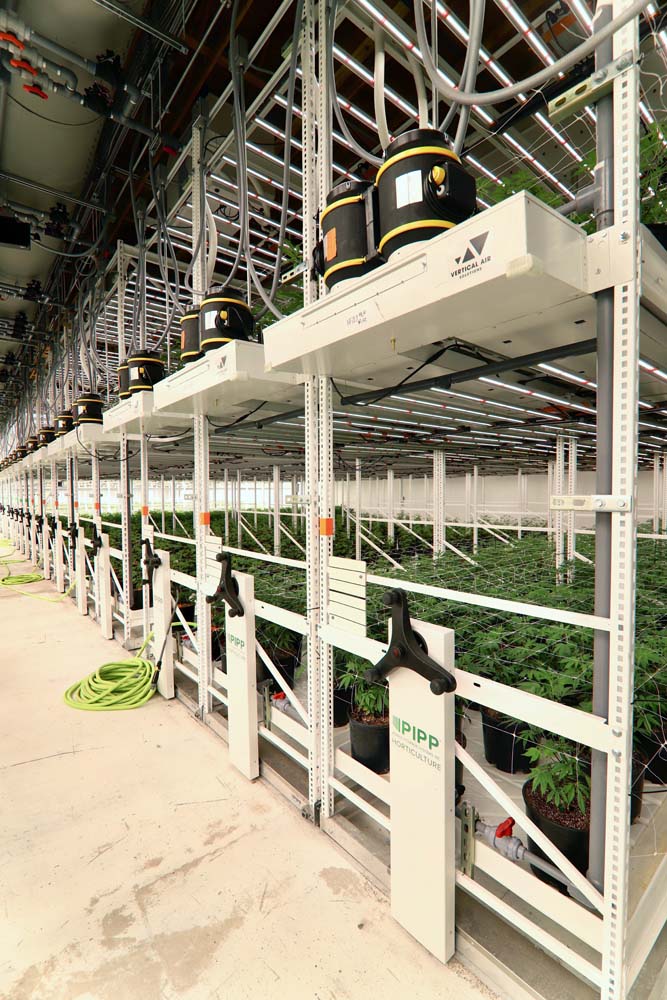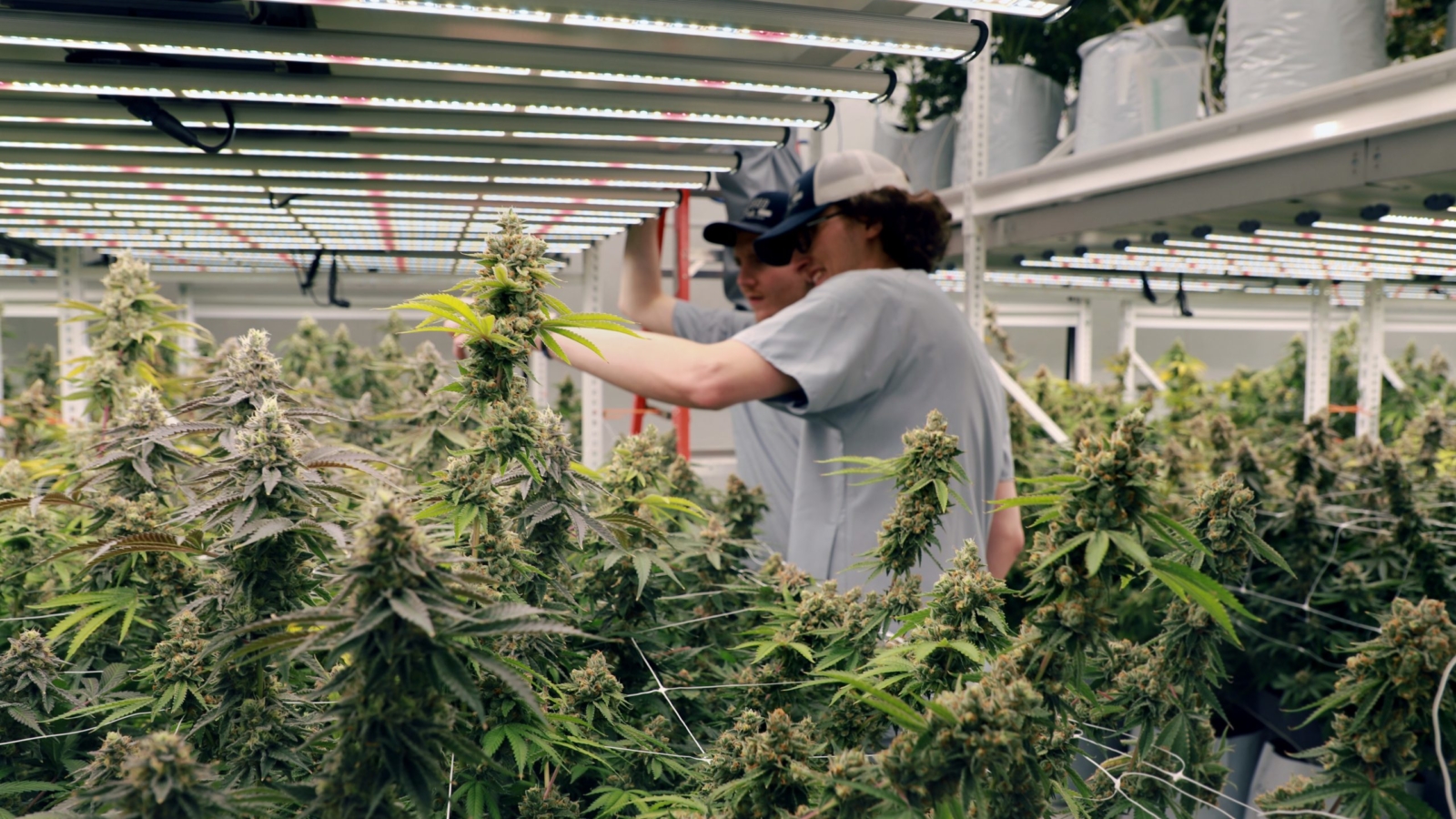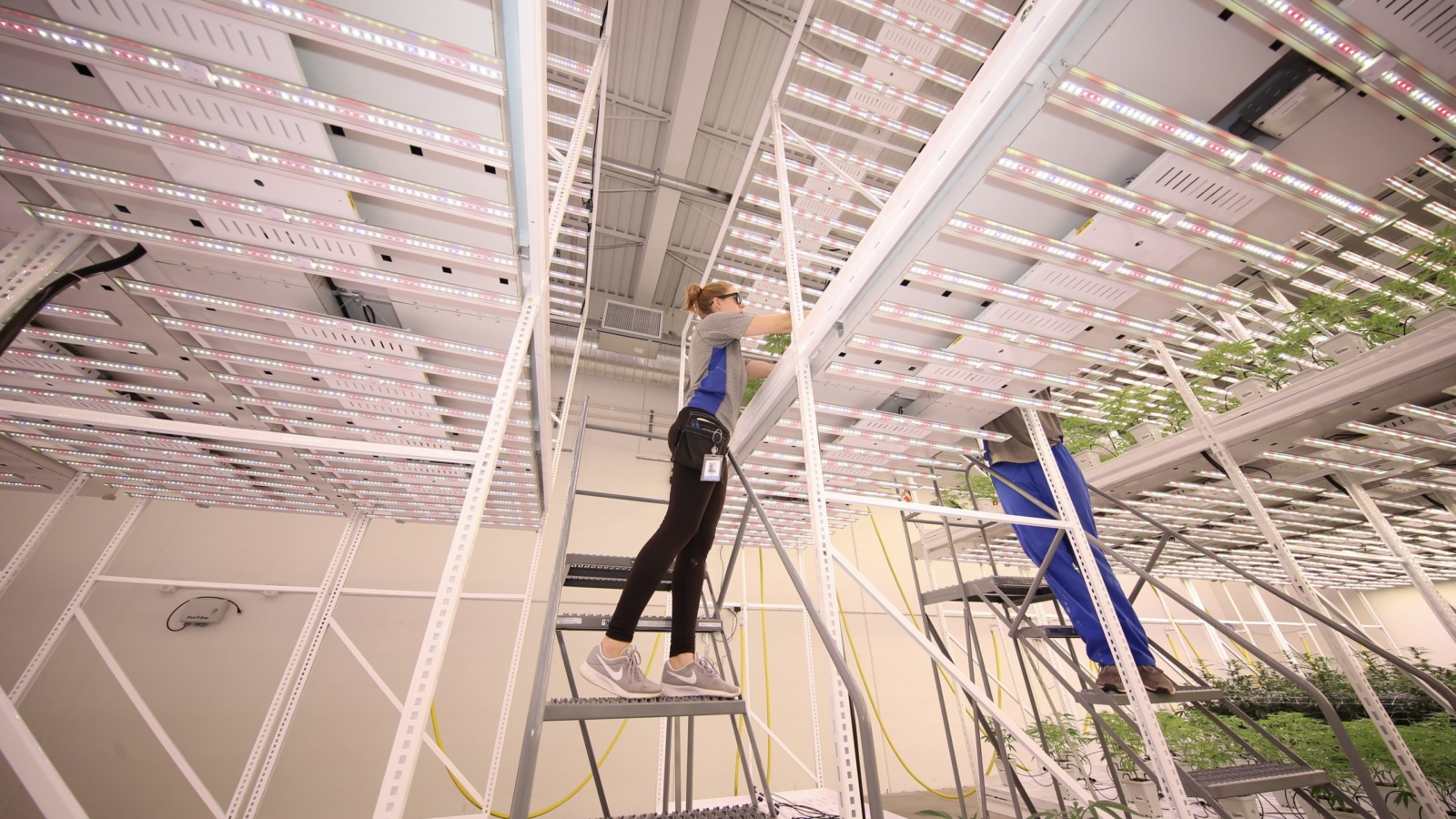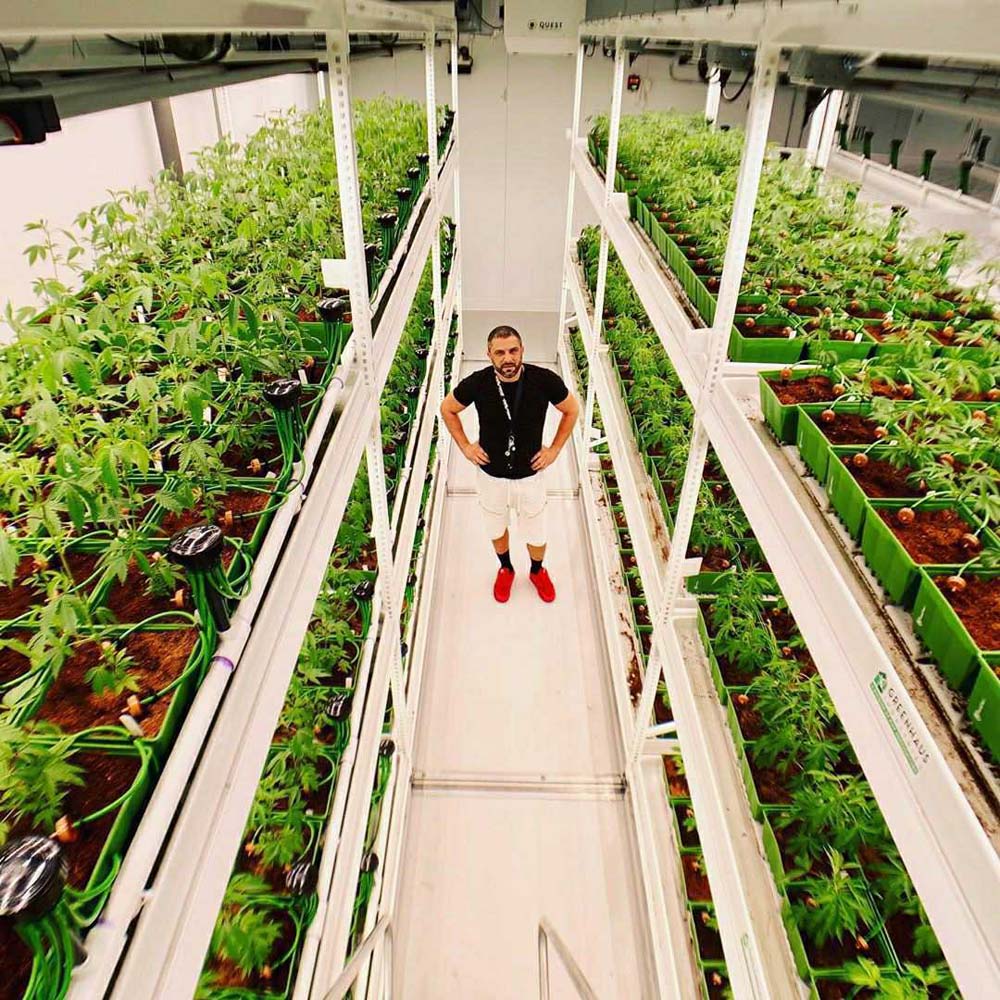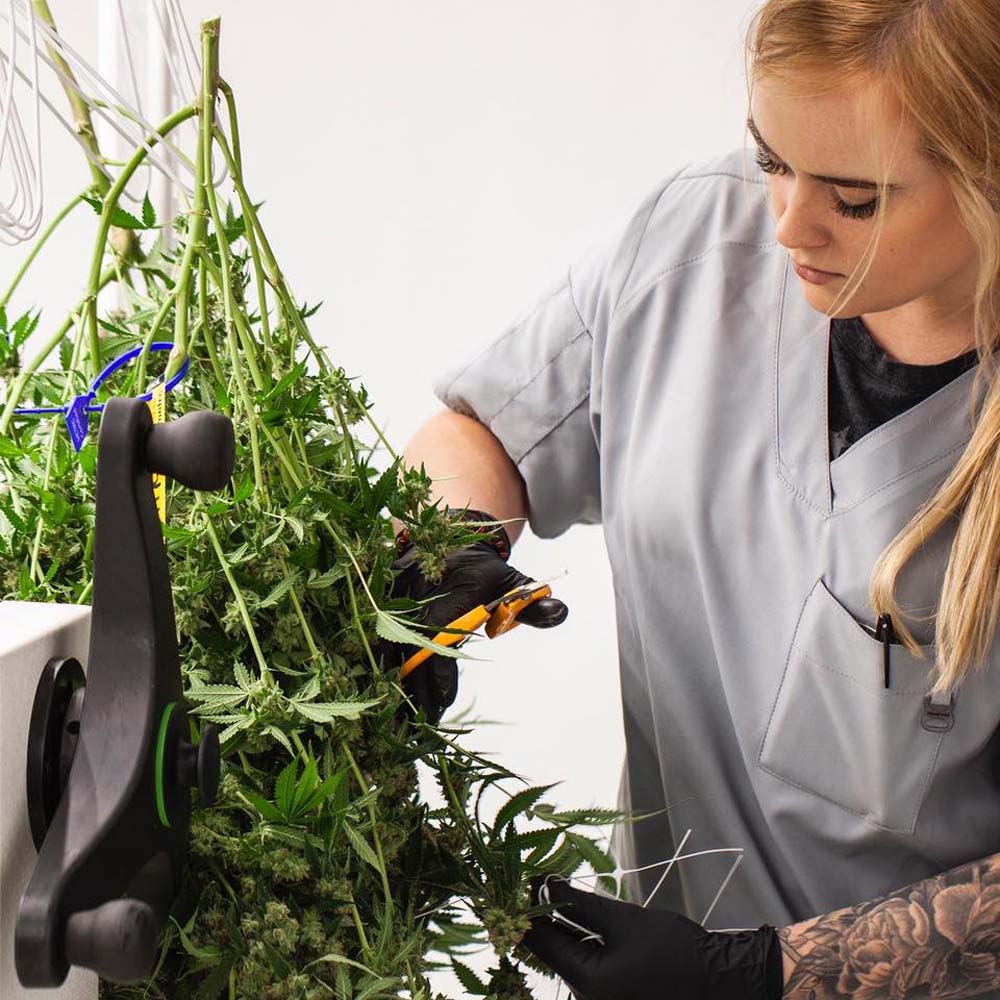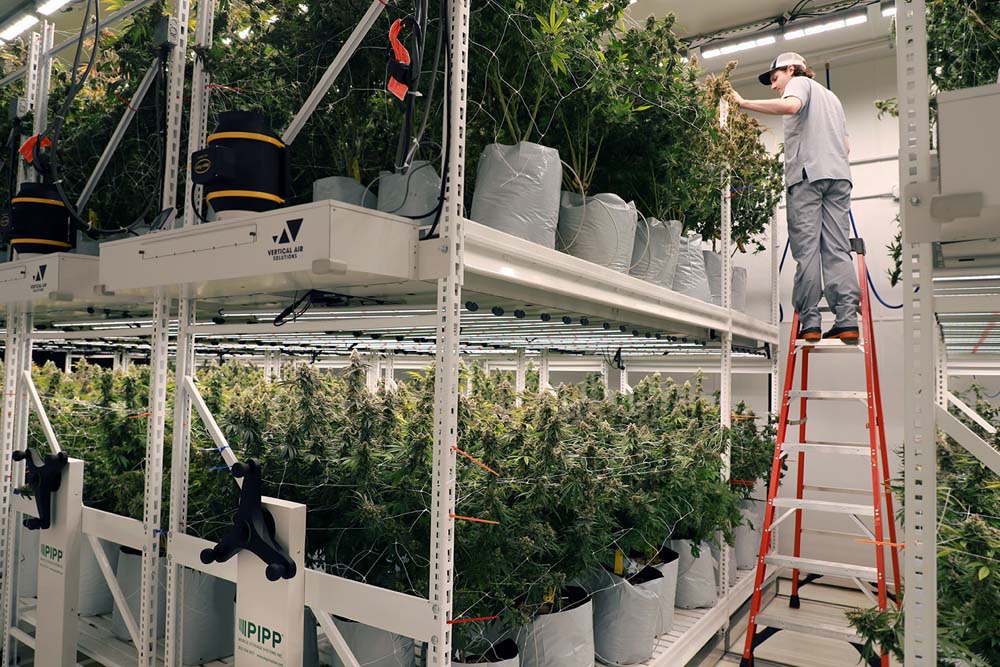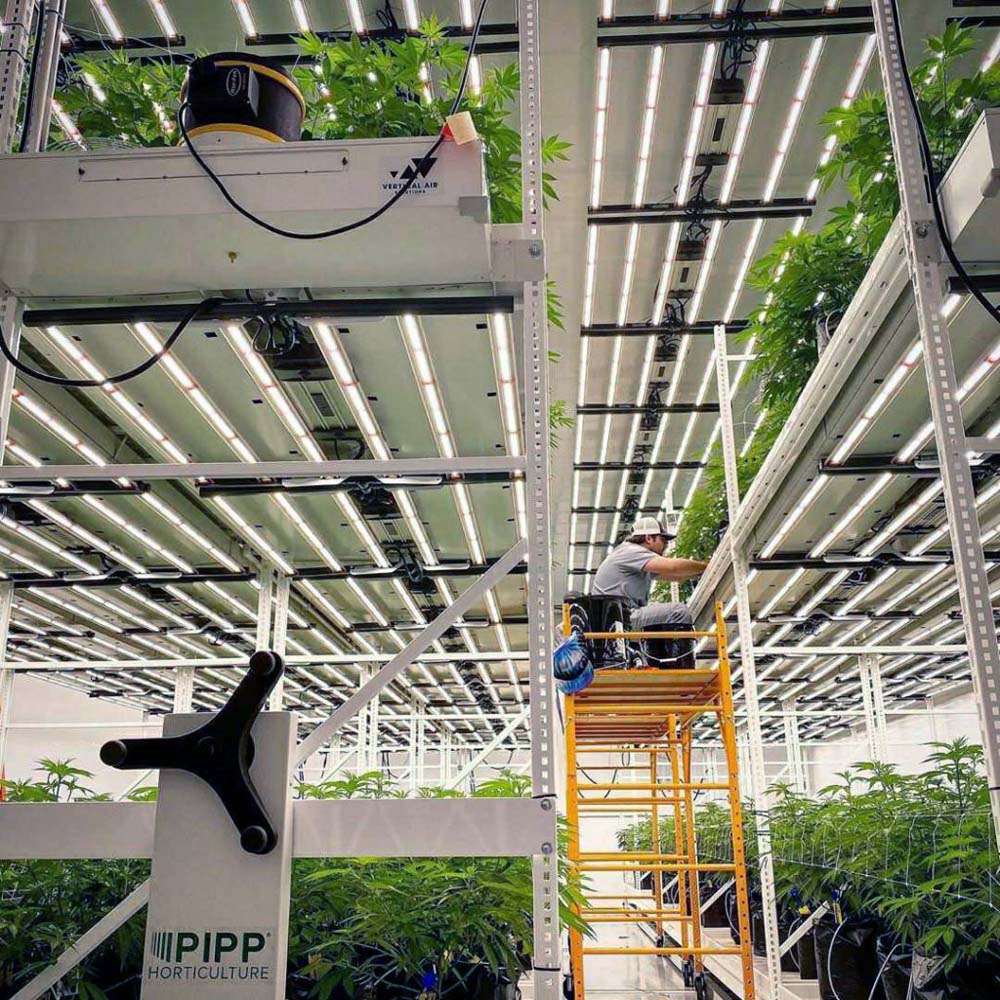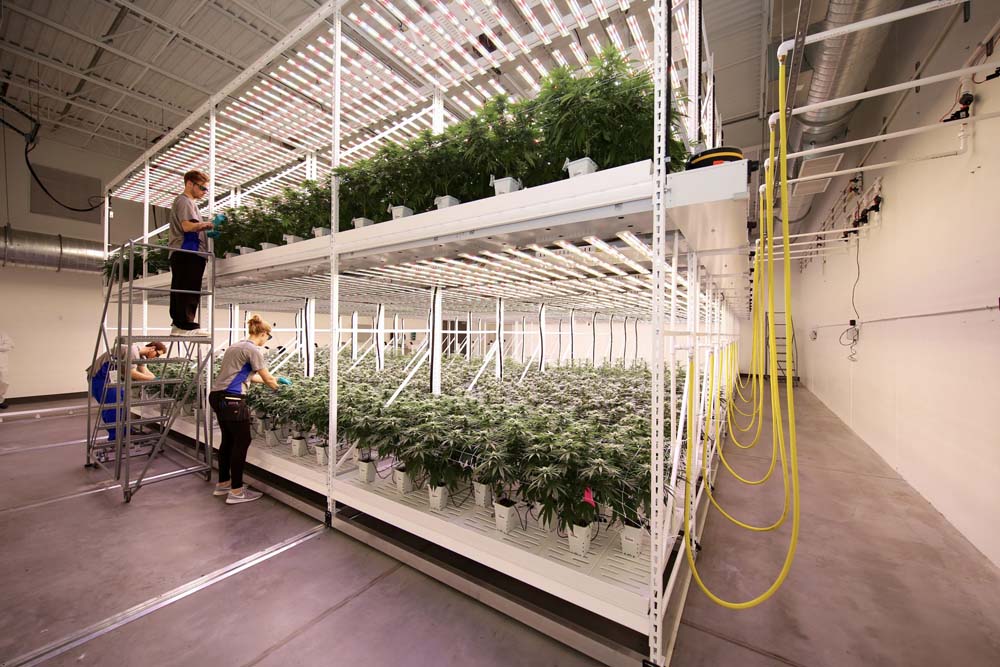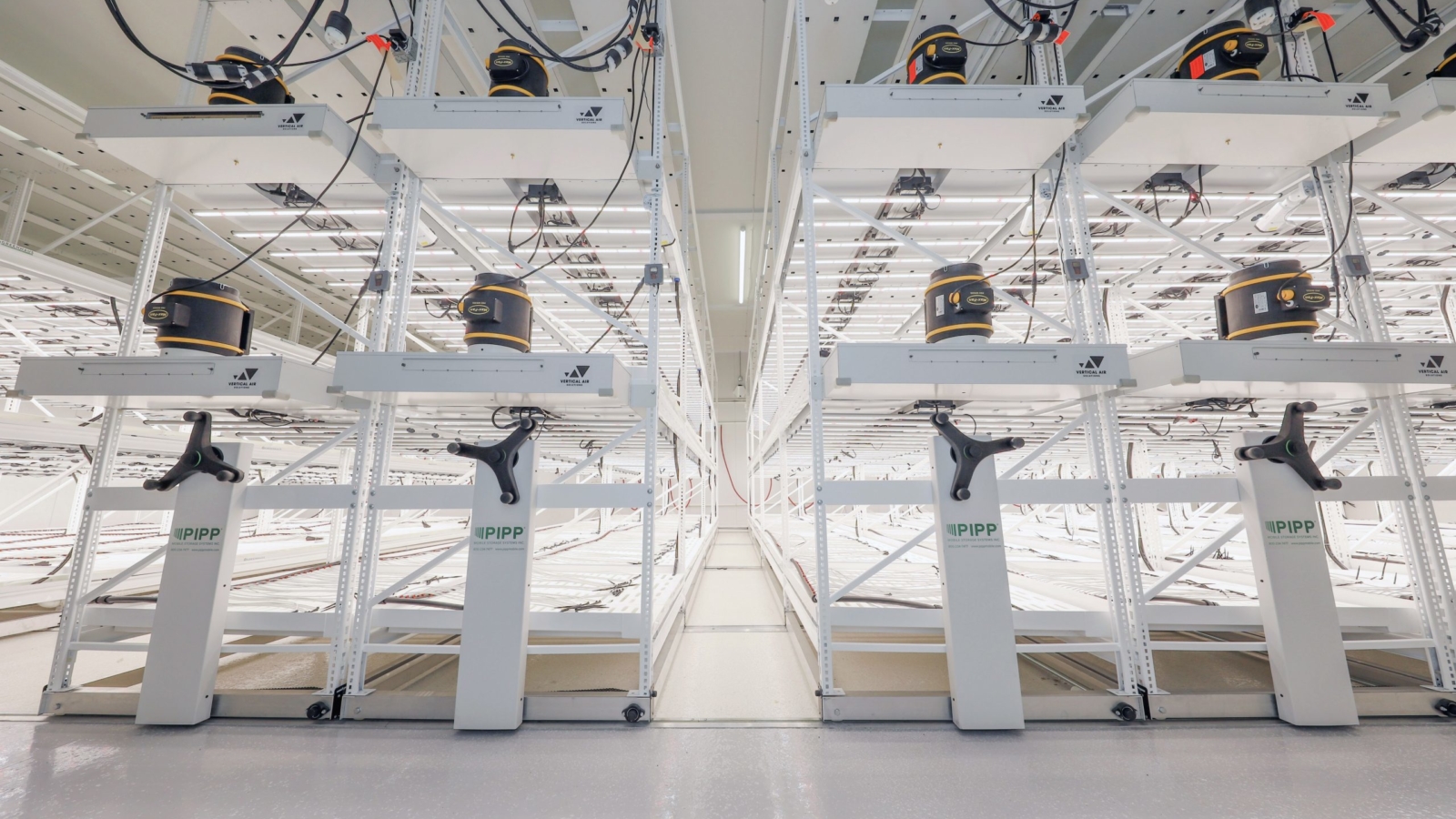#3. Grow Trays
Once you’ve built the framework or skeleton, it’s time to fill it out with grow trays, the organs, metaphorically speaking. They give your cannabis plants home and provide the foundation and/or mounting points for your lighting, air circulation, and plumbing. Pipp’s grow trays, designed for durability, can be used for both drip-to-drain and ebb-and-flow irrigation. Pipp trays come with UV-stability, anti-microbial, and fungal-resistance properties and feature a built-in trough for easy drainage to ensure a clean, sanitary and productive vertical growing environment.
#4. Lighting
Along with water and air, lights provide your cannabis plants the crucial input needed for cannabis to grow healthy, and vigorously, and produce high concentrations of cannabinoids, terpenes, flavonoids, and other actives.
Vertical farming typically utilizes LED lights on each growing tier. While this upfront investment can be expensive, the reduced installation costs and continuous energy savings (when compared to HPS lighting) lower your production cost/gram. Most cultivation facilities recoup their upfront premium within several harvests.
When selecting your vertical farming lights, you’ll want to ensure the light spectrum, intensity, and layout are adequate for your needs, typically between 750 and 1500 PPFD. Ideally, flex-wiring or “daisy chain” functionality will allow for reduced electrical work and installation costs. Additionally, you’ll want your lights rated IP65 or IP66 for wet environments, easily dimmable, and capable of providing an even distribution of PPFD across the entire fixture.
Warranty and service should also be taken into consideration when making your final decision on lighting. With all these components, we recommend utilizing proven systems with verifiable installations and operational customers willing to provide positive testimonials. Working with reputable manufacturers provides assurance and support as you determine lighting, cooling, and other crucial calculations necessary to create the ideal growing environment.
#5. Air Flow
Helping your plants thrive in a vertical growing environment requires ensuring that they get adequate amounts of clean air. Providing sufficient airflow is imperative to plant health and mitigating pests and pathogens throughout your facility. Vertical farming operations have unique air circulation needs. Due to obstructions and restrictions created by infrastructure and the multiple tiers of cultivation, microclimates can form if the design and execution is not done correctly.
Adapting to these challenges is critical for ensuring adequate airflow and thorough fresh air exchanges. You must provide a grow room air circulation system on each level of plants that’s capable of supplying consistent conditioned air to the canopy and sub-canopy across the entire run, with minimal variation. Some airflow systems like Vertical Air Solutions provide additional capabilities, including air sanitization and Co2 enrichment.
#6. HVAC
Your HVAC system is metaphorically like the lungs of a vertical growing system. It brings in fresh air and expels used air through the ventilation system, keeping the air clean, moving, and well-regulated within the set temperature and humidity parameters to ensure your cannabis plants thrive. Keeping your HVAC clean and sanitary allows for regular, fresh-treated air exchange and prevents the growth of mildew, mold, bacteria, and other pathogens in the air.
When choosing your HVAC system, it’s essential to determine the adequate cooling and heating loads specific to your production plan. In addition, you must consider the irrigation rates and dehumidification need to remove excess transpiration.
Most cultivators elect for redundancy in HVAC equipment to ensure continuous operations if one or more systems are down for service or malfunctioning. Also, consider maintenance and servicing these systems, are parts and service personnel nearby and readily available. It is a standard best practice to keep a backup of spare parts prone to breaking and/or have extended lead times.
#7. Irrigation and Fertigation Systems
Similar to previously discussed vertical farming equipment components, irrigation and fertigation systems, and corresponding controls require design, installation, and commissioning to provide coverage for current and future plant layouts and plant feeding strategies. Consistent water and nutrients are essential for cannabis plants. Proper irrigation and fertigation arrangement could be the difference between growing weak plants and producing robust and cannabinoid-rich harvests through various crop steering techniques.
Several well-established companies are operating in this sector, providing irrigation and fertigation systems and controls to commercial farmers worldwide. Utilizing proven providers with cannabis experience will ensure proper functionality and integration. Automated irrigation systems are an excellent way to achieve efficiency, reduce water consumption, and reduce costly and grueling labor often associated with manual fertilizing and hand watering. Be sure to select irrigation and fertigation components that are compatible and integrate with your other grow controls, sensors, and monitors.
#8. Grow Sensor and Monitors
One of the most high-tech evolutions in cannabis growing is the proliferation of grow sensors and monitors and the robust data now available to growers to help make data-driven solutions. These tools offer both a macro and micro view of your entire grow operation, with in-depth analytics including air temperature, soil temperature, pH, humidity, VPD, lighting, and substrate moisture, among others.
Digitally analyzing your cultivation space allows expert growers to combine their earned expertise with insights located in a simple digital dashboard to optimize vertical cannabis growing conditions. When selecting these components, they must have open API and integrate with other systems and controls to provide real-time alerts and provide feedback to modulate other components that maintain set parameters.
#9. Mobile Carts
With a solid infrastructure of vertical grow racks, mobile carriages, and grow trays in place, your vertical farm setup is starting to take shape. While space maximization and optimization have been our main focus throughout this article, we’ve yet to address one of the critical activities of all cannabis operations: harvesting and drying plants.
Now that you’ve optimized the cultivation areas, it’s only right to extend these concepts into the processing and drying areas to maximize the space and create efficient workflow and processes. Pipp’s mobile cannabis drying racks quickly move from flowering rooms to processing and drying areas, making for an efficient, gentle, and sanitary transition from harvest to drying. It’s a smart idea to invest in a few other general mobile carts for storage and transportation to keep the team safe in the grow space, as accidents are more likely to occur when someone is carrying around large loads of gear or plants.
The ideal drying cart is designed and constructed for durability and flexibility to accommodate hanging plants or bucked cannabis to dry/cure/process harvested material. Carts should be adjustable and have various trays or hanging options like cantilever-style finger attachments allowing for custom configuration based on specific plant structure, process, and intended use. Additional features like nesting bases, security cages, and anti-microbial and fungal-resistance coatings are available.
#10. Storage Lockers
Cannabis growing operations have to ensure the safety of their employees, communities, facilities, and product. This is a multi-faceted challenge that requires keeping close track of everything that enters and exits the building. Government regulators must quickly identify the quantity and quality of your product down to the gram. Given this scrutiny level, it’s key to create processes and procedures that prevent product diversion and maintain a sanitary production facility.
Developing in/out flow controls, employee clean-up rooms, sanitation, and cleanliness policies, and investing in high-quality storage lockers, like those produced at Pipp are great ways to ensure safety and provide workers with the peace of mind that their belongings are safe. Various options, including multi-tier, see-through, and coatings, are available.
Common Vertical Farming Equipment Mistakes
Now that we’ve reviewed the main components of a vertical farming system let’s address some of the most common vertical farming equipment mistakes.
